When new entrepreneurs venture into the retail world, most tend to focus on sales as the main benefit to the business. Out of fear of not being able to meet product demands, they may fall into the trap of overcompensating by investing in too much inventory. Now, depending on your type of merchandise, this could be a small problem or a big problem, but it is a problem nonetheless. Marcus alway says, “you don’t have to be a genius to run a successful small business, but you better be smart enough to be willing to learn.” If you’re not sure why investing in too much inventory could be a problem, then keep reading because we’re about to do a brief deep dive into advice for small businesses that manage retail inventory.

First things first: when it comes to inventory planning for small businesses, there is one common mistake made by many entrepreneurs that can be easily avoided. So, let’s get this one out of the way: not keeping track of the little things. Attention to detail is imperative when it comes to inventory planning for retail businesses. You must keep everything organized and up to date- from your books and numbers to the physical merchandise. Many store owners like to play Wizard of Oz with their shops. This is when all the merchandise is beautifully displayed in public spaces and managers know, down to the most minimal item, how many units are available on every single shelf. But when you go behind the curtain, the magic is gone.
Warehouses are in disarray and there is plenty of merchandise unaccounted for. To optimize the management of your inventory, you must keep order and account for everything you own, regardless of where you hide it.
Why Is All Inventory Perishable?
To manage your inventory efficiently, it is important to understand that all of your merchandise is perishable. From items with expiration dates, food items that may rot, to objects that you might not think could be perishable, everything has a lifespan; and you must constantly be aware of what your inventory’s lifespan is. For example, while articles of clothing might not rot as unsold food items do, they still have a shelf life. Think about seasonality; if you have bathing suits left after the summer is over, they might not be sellable anymore. Now you are stuck with those bathing suits in inventory that will take up precious space, or you are going to have to liquidate at a lower price to at least get some return on your investment. Another reason why non-perishable items become perishable is that unsold merchandise depreciates once new models or new trends become available. A common example of this can be found in car dealerships. Who would pay full retail price for a car after the new-year model releases? Once your inventory is past its prime selling date, you must make the difficult decision to either:
- Discard it as a full loss—as you would with spoiled food items;
- Lower the price to at least try to minimize the damage—like an "end of season" or a "making room for new models" sale; or
- Store it until you can try to sell it again—like the case of the bathing suits during winter.
This last one is a gamble that will still cost you. If you are maximizing your storage space properly, you might not have room to store much merchandise until you can sell it again the following year. Also, you run the risk that once summer comes back around, fashion trends no longer favor your old merchandise, meaning that you just spent a whole year storing something that you might not be able to make a profit on regardless.
It is imperative to keep in mind that while sales and discounts could increase foot traffic to the store and help you raise your sales numbers, discounted merchandise will negatively affect your bottom line. So, a tip for small businesses is to “know your numbers” so that you can make savvy decisions that will strike a financially healthy balance between sales and inventory. This is Marcus’ number rule in business, you don’t have to know them by heart (although technically you could and Marcus will even tell you that you should), but you should have all your numbers up to date, well organized, and accessible at all times.
What Is An SKU?
If your business offers different types of items—like for example, a convenience store or neighborhood bodega—you need to be aware of the individual lifespan for each of the SKUs that you have in inventory. SKU (pronounced “skew”), is an acronym short for Stock Keeping Unit. It is a unique code used by retailers to identify and track their inventory. This code identifies the product’s characteristics, such as the manufacturer, brand, style, color, and size. For example, one particular pet food store has over 295 unique SKUs for dog food alone. There are 36 different dog food brands; but each brand will have different flavors, and each flavor comes in different presentations (bag, can, pouch, etc.,) and then each presentation might come in different sizes. To continue with this example, not every SKU has the same lifespan. Unopened dry pet foods have a shelf life of approximately a year, meaty dog treats might only have six months of shelf life, and accessories such as leashes and food bowls can technically be on a shelf forever. Once you have determined how many SKUs your small business will handle and what the shelf life is for each, you are ready to begin inventory planning.
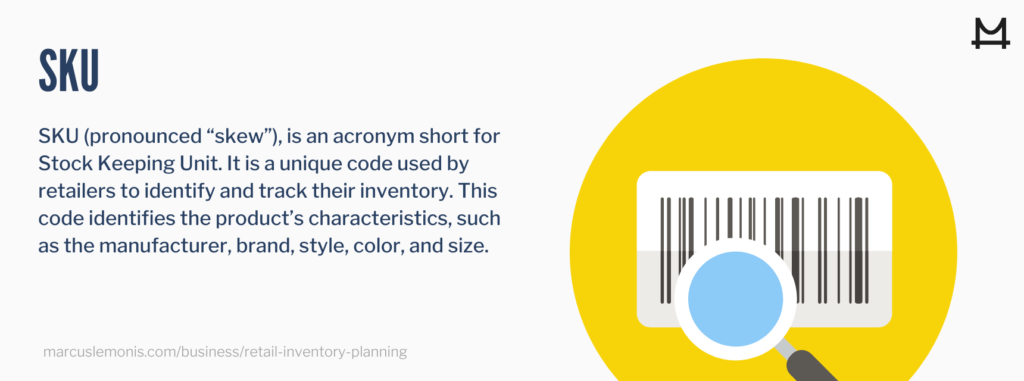
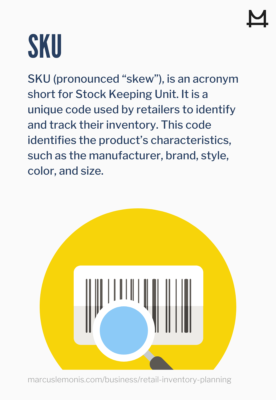
Which Is The Most Important Aspect Of A Retail Business?
Advice for small businesses: keep a close eye on your inventory system and supply chain planning. Maintaining the delicate balance between having enough inventory to meet demand and not having too much that goes to waste is critical. If the stock isn’t managed correctly, it could trick you into believing that your assets are higher than what they are. A tip for small businesses is to develop a sales forecast. In your business plan, you need to determine how much you estimate you will be selling daily, weekly, monthly, or quarterly. Then plan your sourcing lead times to have enough inventory at the right time in the right place to meet demands without going over. Remember that you must try to buy the right amount of stock, for the right time, for the right customer, and have it at the right place and at the right time.
- Too much inventory is going to lead to reduced margins.
- Too little inventory is going to lead to lost sales.
- The wrong inventory is going to lead to both.
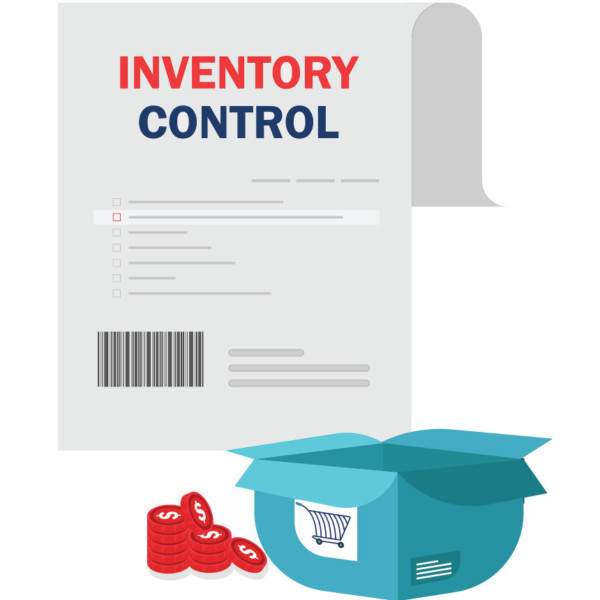
Best Methods For Inventory Planning
The sales forecast is a living document that you will be adjusting with real numbers once you start selling. At first, it will be challenging to create a reliable sales forecast because you won’t have any historical data. To get you started, you could begin hypothesizing numbers based on how you see other businesses in your area perform, or by estimating based on competitive research. The most important thing is to have a forecast to plan your inventory accordingly.
Two important things to keep in mind when it comes to business planning: first, “forecasting is mainly educated guessing” (Berry, 2005); what you need is common sense, research of the factors, and motivation to make an educated guess; and second, forecasts are always wrong. Yes, your sales forecasts will never be perfect. But you can minimize the margin of error by incorporating ranges into your forecasts instead of using exact numbers (Caplice, 2020). Here’s a tip for small businesses: keep track of the forecast errors so that you can measure any drift in the tendencies. So, “have no fear and be willing to fail,” says Marcus Lemonis; because even when it comes to sales forecasting, you will be able to acquire valuable information from your mistakes. Once you have a few weeks’ worth of real sales data, you will be able to guesstimate better forecasts. Once you have a full year of records, it will be much easier to establish your forecast since you will be able to directly compare to the same seasons, holidays, and other important milestones that could affect your business’s sales.
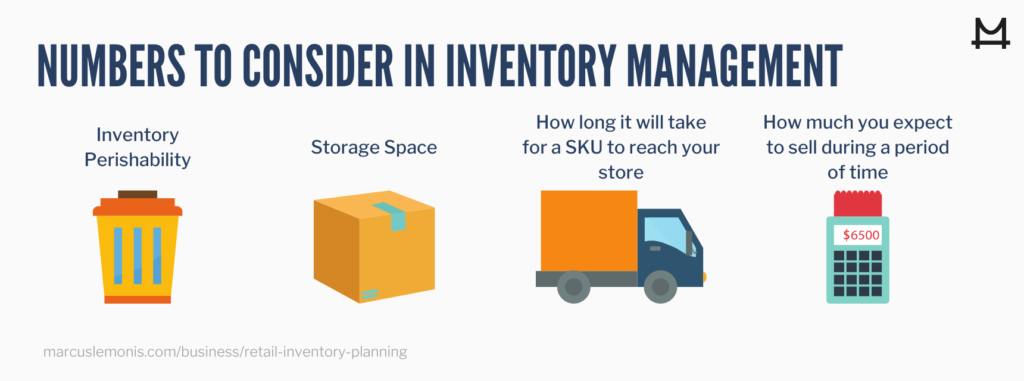
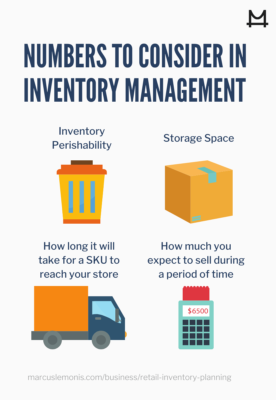
Setting Up The Most Effective Floor Plan For Your Inventory
When talking about inventory planning, it is essential to also talk about product placement. The old adage “location, location, location” is not limited to just real estate. When planning your orders, it is vital to keep in mind how you’re going to showcase your merchandise in your space – not only to account for how much room you’ll need, which is obviously important, but also to know how much inventory you can display for your clients at any given time. Here is some advice for small businesses: once you have developed your sales forecast, give your prime real estate to the SKUs that will be your best-sellers, providing you with the most significant profit margins. For example, in 2014, when a key lime pie company reached out to Marcus for business guidance, he noted that the store had over 60% of their retail space dedicated to selling low price, low margin items that represented only 20% of their overall income. Basically, they were hiding their top sellers! Here’s a tip for small business owners: maximize your retail floor plan by showcasing your best sellers and giving them the most considerable floor space. And as a bonus: when it comes to planning your floor space to drive sales, organize your store clustering items that belong together and label the areas clearly. This will not only help you minimize consumer confusion, but you will also benefit from well-thought-out product placement.
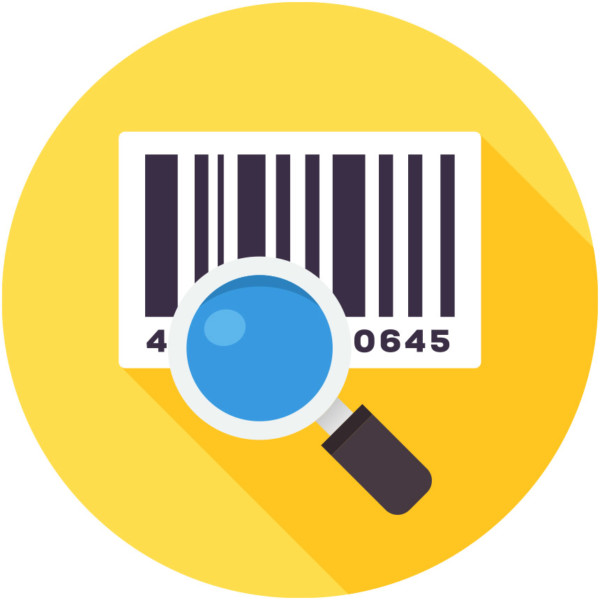
Recent marketing research has recommended that in-store incentives, such as product displays and cross-selling opportunities, significantly influence sales (Chen et al., 2006.) Examples of this can be found throughout pet food stores. For instance, while you can find food bowls for dogs and cats in the bowls section, having some of the dishes by the pet food can motivate shoppers, who might only be in the store for pet food, to also invest in a new bowl. This practice is called cross-selling and, if used wisely, can help you move inventory that is harder to sell, by pairing it up with your best sellers.
Properly Managing Your Inventory Levels
Inventory management is an ongoing process that never ends. It is the lifeblood of a retail business. Here’s a tip for small businesses: keep a close eye on your inventory’s flow, especially at the beginning when you are still trying to figure out your sales forecast. Running out of merchandise to satisfy your consumers’ needs could cost you a consumer for good. “Customers rarely look back after they find a company that can promptly fulfill their orders at a competitive price” (Microchannel, 2015.) If these customers had to go somewhere else because you were out of stock, you might lose their repeat business. Most of those lost clients are a lost source of revenue for your store. Therefore, it is imperative to know each SKU’s lead time to react in time to avoid possible stock-out problems.

Lead times are critical when it comes to planning your sourcing. If, for example, your vendor manufactures in China, you must consider how long it will take for that merchandise to reach your store. Once you place the order, how long is it going to take to fulfill it? Is it being shipped by air or sea? How long does it take to clear customs? After customs, how long is it going to take from the port to your door? Let’s say that the whole process from order placement to delivery takes two months; then you need to consider that and place an order two months before you estimate that you could run out of that product. Lead time becomes another critical number in your SKU’s equation.
Now you know how long it takes to get the product on the shelf and for how long you can keep it there before it becomes waste, how many you expect to sell in a set period of time, and how much space you have available to store that SKU. All these numbers should help you visualize how each SKU should be managed to strike that perfect balance to keep you generating sales while minimizing waste in inventory.
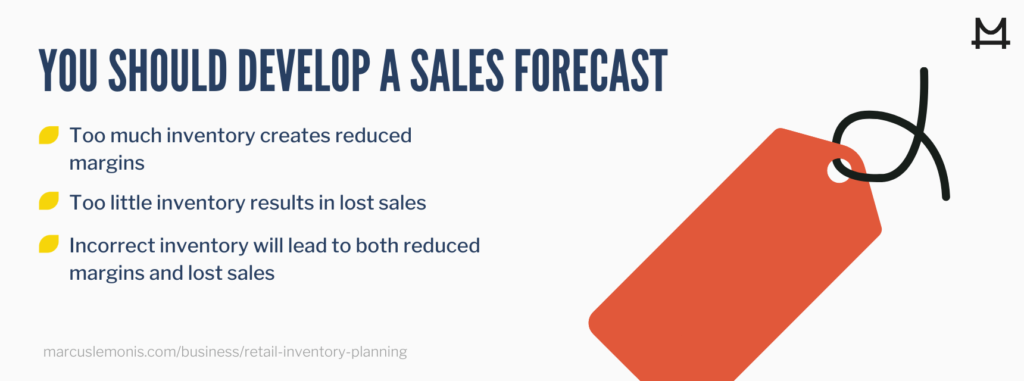

Who Should Oversee Inventory Planning?
Advice for small business owners: you need to be 100% in charge. As mentioned before, inventory planning is what makes or breaks a retail business. You need to know your numbers to make the essential decisions in your company. As your business grows and expands with time, you can look to delegate these responsibilities to a supply chain manager. But even then, Marcus will still tell you that you must “stay focused, work hard, know your numbers, and be disciplined.”
- What strategy do you use to plan your inventory?
- Is your inventory storage space set up efficiently?
- What areas of inventory management can you improve on to improve your business?
Berry, T. (2005, May 1). Creating a sales forecast. Retrieved from https://www.entrepreneur.com/article/77674
Caplice, C. (2020, July). Supply chain fundamentals. Introduction to demand forecasting. Boston; Massachusetts Institute of Technology (MIT).
Chen, Y.-L., Chen, J.-M., & Tung, C.-W. (2006, February 21). A data mining approach for retail knowledge discovery with consideration of the effect of shelf-space adjacency on sales. Retrieved from https://www.sciencedirect.com/science/article/pii/S0167923606000030
Microchannel.com. (2015, January 15). How poor inventory management hurts your business. Retrieved from http://www.microchannel.com.au/company-blog/january-2015/poor-inventory-management





